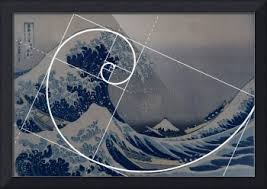Throughout the centuries there has been many variations of writing numerals and counting. An example of something completely different, and outdated, Yan, Tan, Tethera method which was most commonly used to count sheep, although has also featured in a Scottish dance. Today, in Britain, we use the decimal system for counting which is based on ten; the number of fingers and thumbs we have. This system has derived from an ancient Hindu system which was developed by Arabs during the ninth and tenth centuries before quickly spreading throughout Europe.
When teaching, to explain the concept of place value, we write out the names of columns to demonstrate the value of each number:
| Thousands | Hundreds | Tens | Units |
| 3 | 4 | 5 | 2 |
This number is then 3452. We can describe this number as consisting of three thousands, four hundreds, five tens and two units. When written out in words it would read; three thousand, four hundred and fifty-two. Zero is an important feature in that it is described as a place holder; if there were no tens in three thousand, four hundred and fifty-two, it would become three thousand four hundred and two which would be written as 3402.
Thus, in our decimal system the concept of place value can be explained as; the place of a digit in a number tells you the value of that digit.
A very significant feature of the place value system is the principle of exchange; it is described in Haylock as being “the principle at the heart of our place value system”. It is the idea that a ten in one place can be exchanged for one in the next place to the left, for example 10 hundreds could be exchanged for 1 thousand.
It is this principle of exchange which makes the place value system fundamental to the way we complete calculations, which is how I can introduce the element of Connectedness (Ma, 2010, page122). My understanding of Connectedness is that there are a lot of areas of mathematics which overlap, such as a concept being shared within different areas. So when I was reading about place value it reminded me of the element of Connectedness, and this is due to the principle of exchange. Within addition calculations you ‘carry’ numbers, this is the process of replacing ten in one column by one in the column to the left. The importance of place value here is imperative as without an understanding of it, you would be unable to complete the calculation.
An understanding of place value is also vital to complete subtraction sums consisting of ore than 1 digit. It is needed to complete column method of subtractions using the principle of exchange to overcome the difficulty caused when the digit to be subtracted in a particular column is less than the one it is being subtracted from. This demonstrates the element of Connectedness.
I have taught a few lessons on place value before moving onto multi-digit addition and subtraction calculations. From giving those lessons, I understand how difficult it is to understand sums using ‘carrying’ and ‘borrowing’ if you do not have a knowledge of place value. I found that the best way to teach place value was by using base ten blocks, which most schools have access too. They consist of units, tens and hundreds, and makes it a lot easier to demonstrate how you can exchange 10 units for 1 ten and 10 tens for 1 hundred. It is also possible to use these blocks to practice addition and subtraction with exchanging. The physical aspect to the lesson definitely helps the child understand what is happening.








